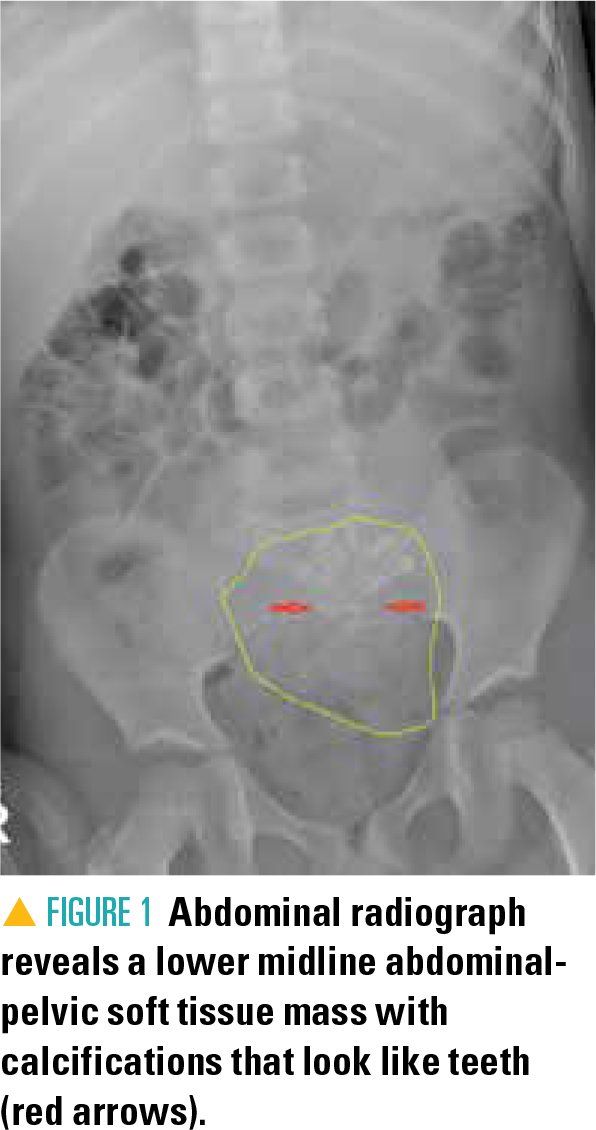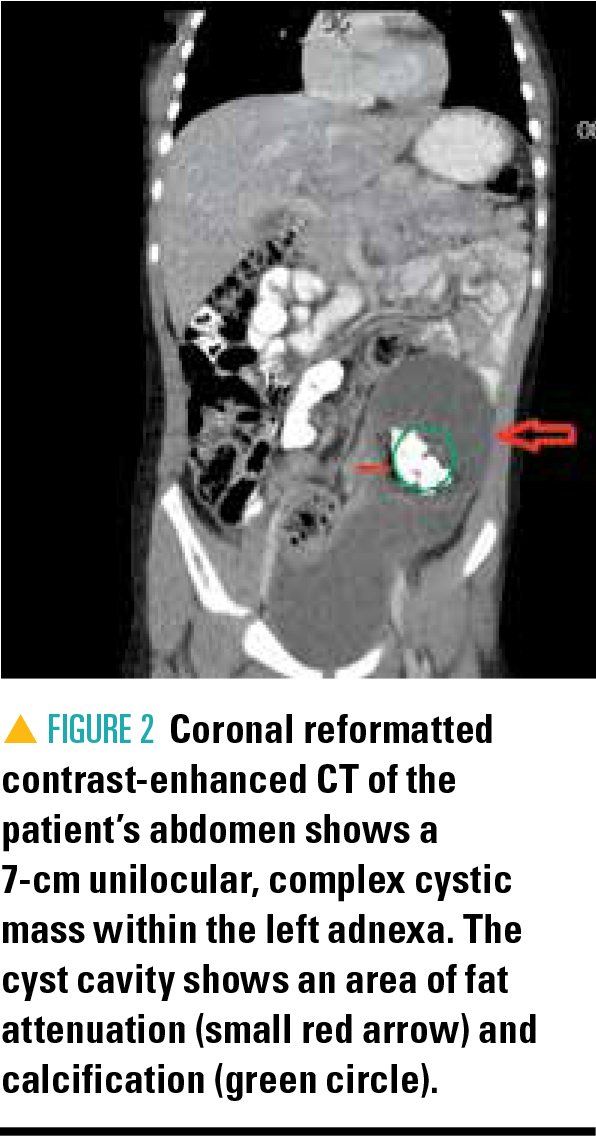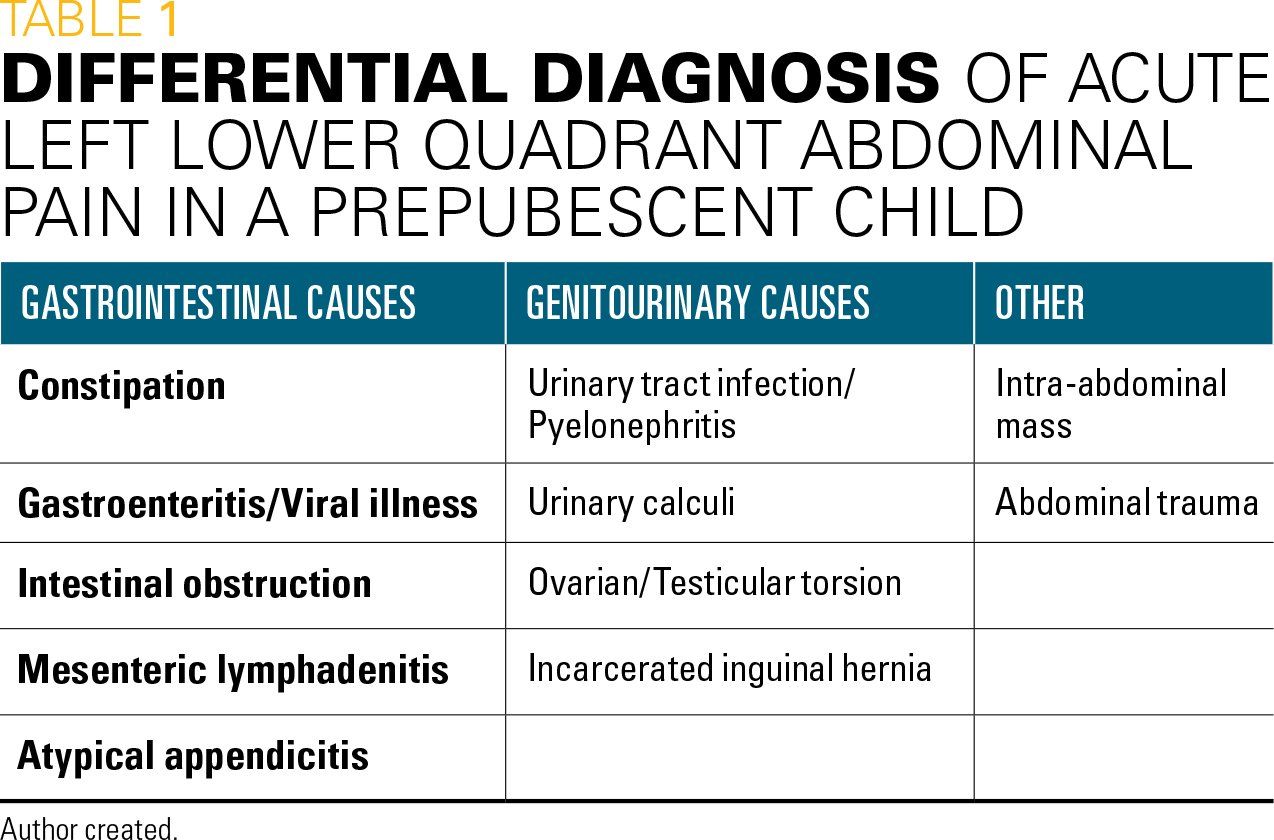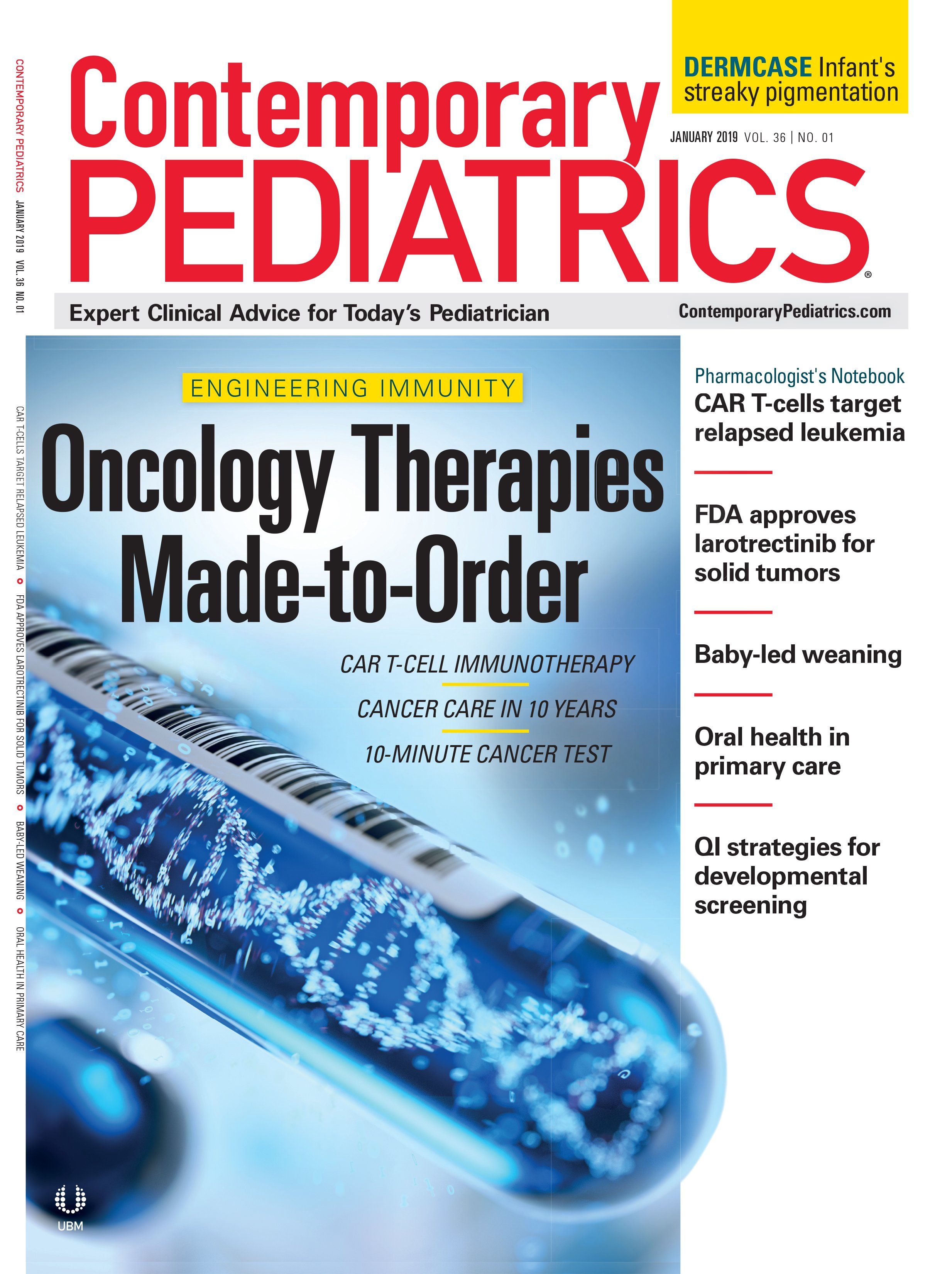Left lower quadrant abdominal pain, vomiting
A 4-year-old girl presents to the emergency department (ED) with a 12-hour history of progressively worsening episodic left lower quadrant (LLQ) abdominal pain and nonbilious emesis. There was no history of fever, diarrhea, hematochezia, constipation, or dysuria. The child was previously healthy, did not take any medications, and had no history of prior surgery.
Figure 1

Figure 2

Table 1

Table 2

The Case
A 4-year-old girl presents to the emergency department (ED) with a 12-hour history of progressively worsening episodic left lower quadrant (LLQ) abdominal pain and nonbilious emesis. There was no history of fever, diarrhea, hematochezia, constipation, or dysuria. The child was previously healthy, did not take any medications, and had no history of prior surgery.
On initial presentation, the girl appeared mildly uncomfortable with a temperature of 98.6â°F; heart rate of 102 beats/minute; respiratory rate of 18 breaths/minute; and pulse oximetry of 98% in room air. Her abdomen was soft with mild distention, and she had significant tenderness to palpation and voluntary guarding in the left lower quadrant. No masses or organomegaly were appreciated, and normal active bowel sounds were present. The remainder of her exam was unremarkable.
Labs and imaging
A complete blood count, basic metabolic panel, and clean catch urinalysis all were within normal limits, and fecal occult blood was negative. Abdominal radiograph revealed a lower midline, abdominal-pelvic soft tissue mass, with internal calcifications that looked like teeth (Figure 1). Bowel gas was present throughout, without obvious obstruction. Computed tomography (CT) of the abdomen and pelvis with contrast subsequently revealed a 7.0 x 6.2 x 5.4-cm unilocular, complex cystic mass within the left adnexa with internal calcifications (Figure 2).
Differential diagnosis
Common things being common, the differential diagnosis in the ED included constipation, gastroenteritis, viral illness, and urinary tract infection. Due to the patient’s examination findings suggestive of an acute abdomen, intestinal obstruction (to include volvulus and intussusception) was also highly considered. After review of the patient’s plain film, the differential diagnosis was expanded to include ovarian neoplasm and torsion.
Table 1 shows the differential diagnosis for acute LLQ pain in the prepubescent pediatric age group. However, it’s important to remember that abdominal pain in young children is often poorly localized. The differential diagnosis of acute abdominal pain is guided by other key findings on review of systems (ROS) to include the presence or absence of fever, and changes in bowel or bladder habits. In the absence of diarrhea, gastroenteritis should always be a diagnosis of exclusion.
Although many cases of acute abdominal pain are benign, others require rapid diagnosis and treatment to minimize morbidity.1 Signs and symptoms that suggest an acute surgical abdomen include bilious vomiting, absent bowel sounds, occult blood in stool, voluntary guarding or rigidity, and rebound tenderness (Table 2).2
Management
The CT and abdominal radiograph were highly suggestive of an ovarian teratoma, and the patient was promptly admitted to the Pediatric Surgery Service. She underwent an open surgical excision of the mass, sparing a portion of the left ovary. Biopsy confirmed a benign mature cystic teratoma (MCT) measuring 7.5 cm in greatest diameter. No ovarian torsion was seen at the time of surgery, but it was suspected the patient’s presenting symptoms were attributed to intermittent ovarian torsion. Presurgical alpha-fetoprotein (AFP) and beta-human chorionic gonadotropin (β-hCG) were negative.
Discussion
Ovarian neoplasms are uncommon in the pediatric population, with an estimated incidence of 2.2 cases per 100,000 girls per year.3 These neoplasms include a variety of benign and malignant tumors, with germ cell tumors (GCTs) being the most common. Mature cystic teratomas (MCTs), or dermoid cysts, are the most common type of GCT, accounting for approximately 50% of pediatric neoplasms.4 Teratomas are neoplasms containing tissue from all 3 germ cell layers, and MCTs predominantly contain ectodermal derivatives such as hair and teeth. These MCTs are benign, with malignant transformation occurring in less than 2% of cases.
Mature cystic teratomas can present with nonspecific symptoms such as abdominal pain and swelling, or may be found incidentally on imaging. Approximately 30% of MCTs in children present with acute abdominal pain, often accompanied by nausea and vomiting, subsequent to ovarian torsion.5 Endocrinologically functioning tumors, signs of precocious puberty, and palpable abdominal or pelvic masses are much more likely to represent malignant neoplasms.5 Various tumor marker assays also are helpful in detecting malignant ovarian neoplasms, to include AFP and β-hCG.
Dermoid cysts have a characteristic appearance on ultrasonography and CT (a unilocular cystic mass containing fat, with or without calcification), allowing for reasonably accurate noninvasive diagnosis.4 Interestingly, the abdominal kidney/ureter/bladder (KUB) X-ray in this case was also strongly suggestive of the diagnosis, given the presence of calcifications that looked like teeth. Had the KUB not shown teeth, other common causes of acute abdominal pain, as well as intestinal obstruction, would have remained higher on the differential.
Ovarian cystectomy is recommended in order to make a definitive diagnosis, preserve ovarian tissue, and avoid potential complications such as ovarian torsion, cystic rupture, or malignant degeneration. Estimation of preoperative and postoperative tumor markers is essential to help assess for malignant neoplasm, although negative tumor markers do not exclude the possibility of malignancy.4 The long-term recurrence rate after surgical excision of MCTs is 4.2%.6 Given the slow growth of MCTs, the low rate of recurrence, and the rare risk of malignancy, the most appropriate postoperative method of surveillance is still up for debate.7
Patient outcome
The patient’s recovery after surgical excision of her MCT was unremarkable, and she was discharged home on postoperative day 2. A CT scan of the chest and abdomen at 2 months postresection showed no evidence of recurrence or metastases. The patient was evaluated by Pediatric Hematology/Oncology 4 months postoperatively and again had a negative AFP and β-hCG. Follow-up surveillance screening with abdominal ultrasound and tumor markers was planned for every 3 months.
Conclusion
Although ovarian neoplasms are rare in the pediatric population, they are important to consider in the differential diagnosis of acute abdominal pain and vomiting, especially in the absence of fever.
References:
1. Leung AK, Sigalet DL. Acute abdominal pain in children. Am Fam Physician. 2003;67(11):2321-2326.
2. Reust CE, Williams A. Acute abdominal pain in children. Am Fam Physician. 2016;93(10):830-836.
3. Taskinen S, Fagerholm R, Lohi J, Taskinen M. Pediatric ovarian neoplastic tumors: incidence, age at presentation, tumor markers, and outcome. Acta Obstet Gynecol Scand. 2015;94(4):425-429.
4. Heo SH, Kim JW, Shin SS, et al. Review of ovarian tumors in children and adolescents: radiographic-pathologic correlation. Radiographics. 2014;34(7):2039-2055.
5. Breen JL, Denehy TR, Taylor RR. Pediatric ovarian malignancies. Glob Libr Women’s Med. ISSN:1756-2228) 2008; doi 10.3843/GLOWM.10251.
6. Harada M, Osuga Y, Fujimoto A, et al. Predictive factors for recurrence of ovarian mature cystic teratomas after surgical excision. Eur J Obstet Gynecol Reprod Biol. 2013;171(2):325-328.
7. O’Neil KE, Cooper AR. The approach to ovarian dermoids in adolescents and young women. J Pediatr Adolesc Gynecol. 2011;24(3):176-180.
Newsletter
Access practical, evidence-based guidance to support better care for our youngest patients. Join our email list for the latest clinical updates.
